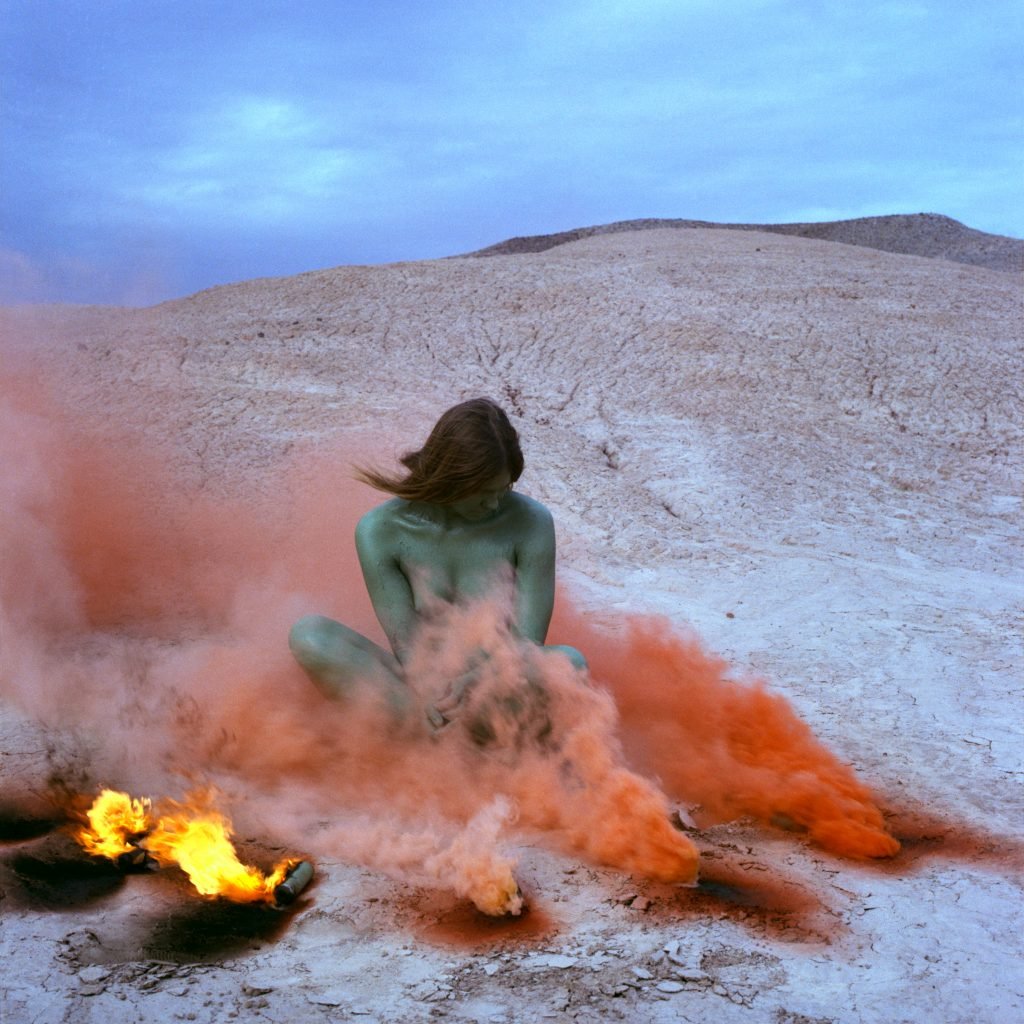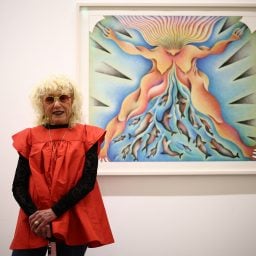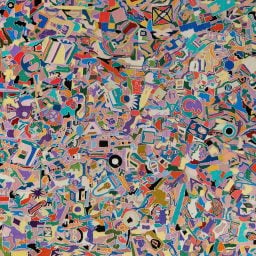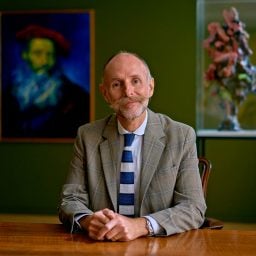In a clever curatorial twist, there is a knockout show-within-a-show in “Herstory,” the compelling six-decade survey of the feminist icon Judy Chicago which opened at the New Museum in New York today. Amid floors devoted solely to Chicago’s work, one section, entitled “The City of Ladies,” places her works in dialogue with those of other women artists from across the centuries, from Hilma af Klint to Frida Kahlo.
This curatorial vignette is worth the price of admission in and of itself and underscores larger tendencies in the artist’s practice. Chicago’s hard-to-quantify oeuvre is defined by her broad buckshot scope (and laser-sharp aim)—she is the chameleonic embodiment of a group show. Colored smoke, fireworks, airbrushed car hoods, sculpture, needlepoint, performance, photography, ceramics—the list of mediums she’s mastered goes on and on.
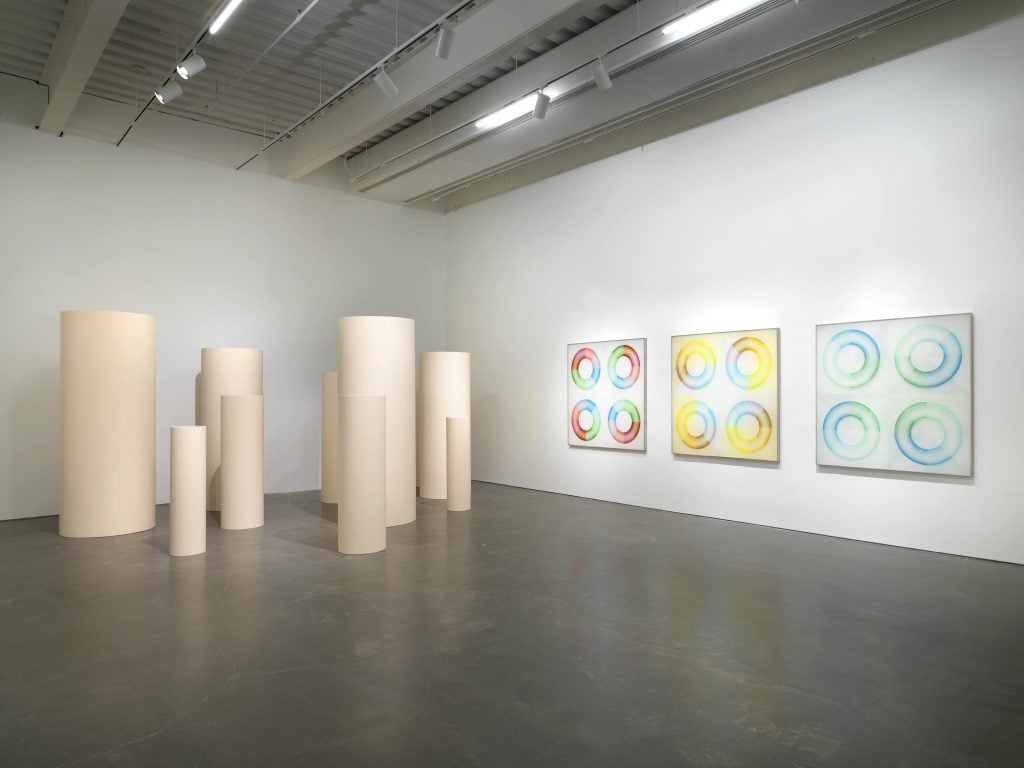
“Judy Chicago: Herstory,” 2023. Exhibition view: New Museum, New York. Courtesy New Museum. Photo: Dario Lasagni
All of these facets are on display in the 84-year-old artist’s victory lap of an exhibition. “Herstory” opens today and runs until January 14, 2024. Encompassing four floors, the exhibition is a study of magnitude that veers from serene to devastating. Goddess sculptures and optimistic 1960s candy-colored abstractions segue into brutal meditations on the Holocaust and extinction. Meanwhile, “The City of Ladies” occupies the museum’s fourth floor. Chicago was on hand at Tuesday’s evening preview event and appeared just as enthralled by the works around her as the other attendees.
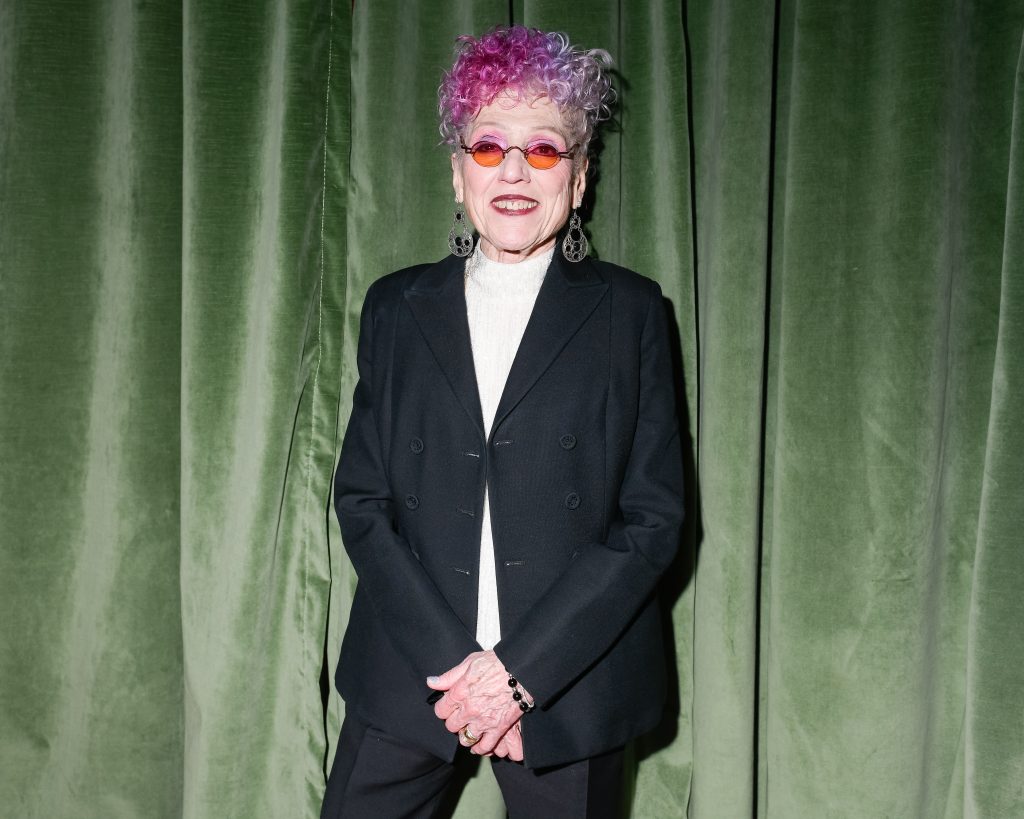
The artist at the opening dinner for New Museum’s “Judy Chicago: Herstory.” Photo: BFA, courtesy of Dior.
“My work draws on the historical work, the herstory, that has been assembled in ‘The City of Ladies,’” Chicago said, refined in a double-breasted black suit and white turtleneck, her hair a purple and fuchsia mélange. “Five hundred years of women’s cultural production has been assembled. This is the background against which I have worked, and without it, people would not have been able to comprehend my work,” she said. Throughout her career, Chicago has been as much of a proselytizer and teacher as an artist, always at the ready to celebrate the women who inspired her and came before her.
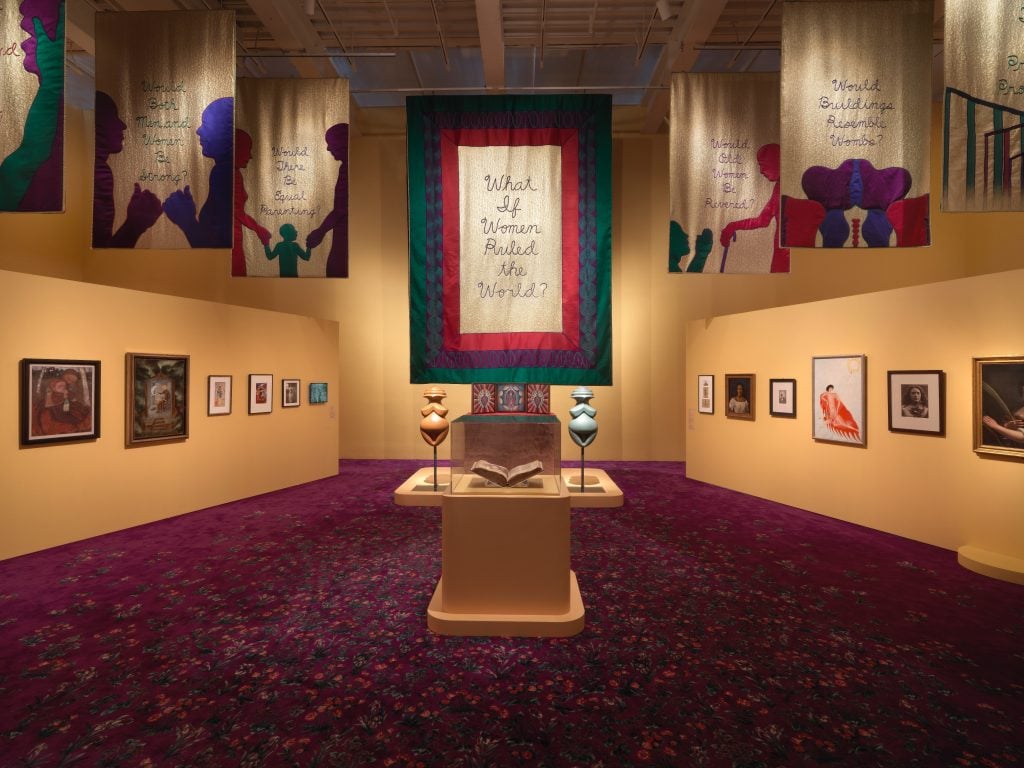
“Judy Chicago: Herstory,” 2023. Exhibition view: New Museum, New York. Courtesy New Museum. Photo: Dario Lasagni
Grabbing my arm, Chicago drew me across the deep magenta floral carpet and through the crowd. “Come here!” she said, motioning to a wall monitor. “Here is a video of the history of goddess imagery,” she explained. “It tells the story of what my goddesses draw on. There’s a room downstairs that has ‘The Birth Project’ in it. Come here.” We walk to another portion of the gallery. “This is a wall about images of motherhood and birth,” Chicago said. “Nobody, even I didn’t know there was a tradition of women making work on these subjects. This spans centuries!”
She pauses and continues, “It is not only women artists who have been erased but subjects that the mainstream art world has not considered important, like birth and motherhood. My work draws on all this work. That’s what’s important about ‘The City of Ladies.’” Among the 90 artists in this section are marquee names like Leonora Carrington, Georgia O’Keeffe, Hilma af Klint, and Frida Kahlo. But there is a wealth of striking art from artists whom we should know, offering an enrapturing syllabus of women who deserve a rightful place in the canon.
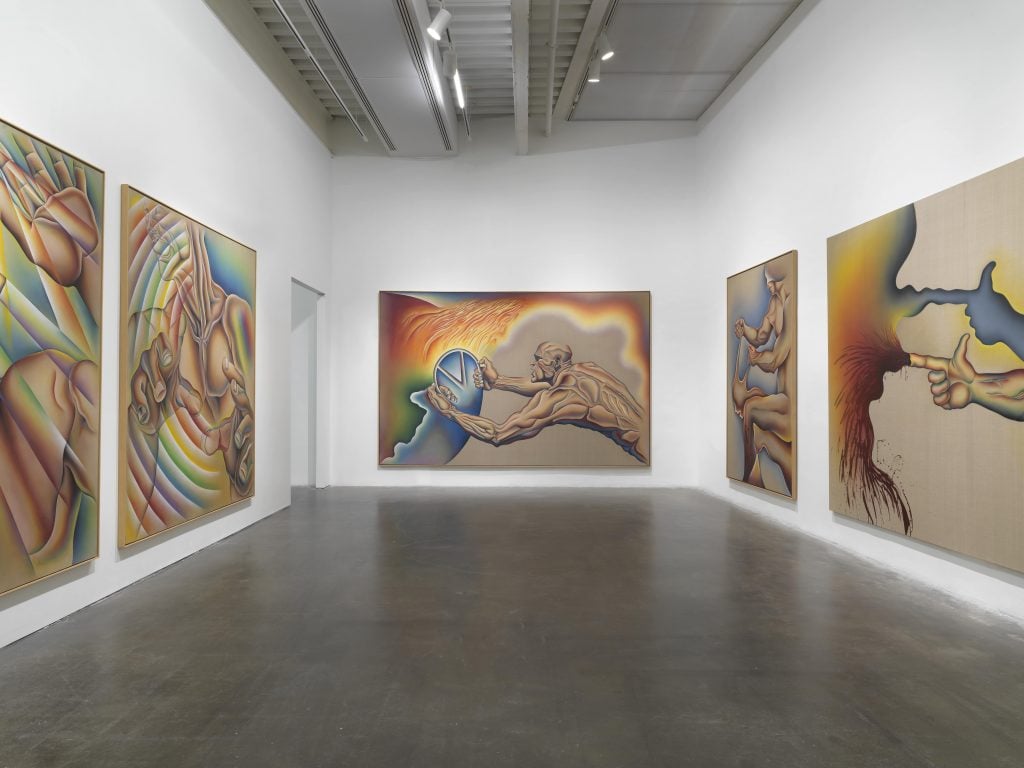
“Judy Chicago: Herstory,” 2023. Exhibition view: New Museum, New York. Courtesy New Museum. Photo: Dario Lasagni
One example is an unforgettable gouache of quiet majesty by artist Charlotte Salomon—it’s a self-portrait, painted in 1940 during her exile in France while pregnant at 26 (she would die in 1943 at Auschwitz). “It’s the most powerful thing that!” Chicago said. “There’s so much heartbreaking stuff. It was damaged and the New Museum had to conserve it. That is a very significant metaphor for the degree to which women’s work historically has not been cared for, not been honored, and not been put together so you can see her story.”
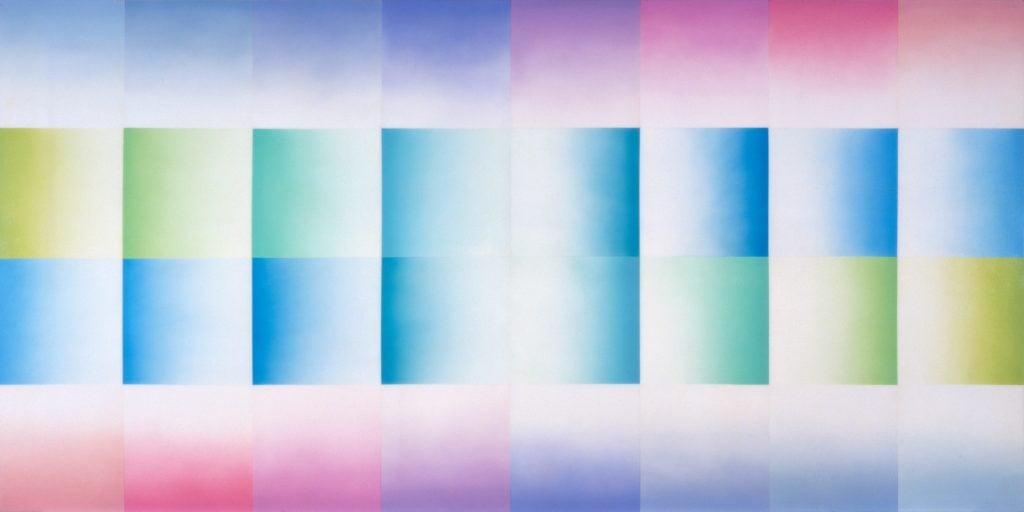
Judy Chicago, Evening Fan (1971). Courtesy of the artist. Collection Jay Franke and David Herro, Miami Beach, FL
On the second-floor gallery, I found a particularly resonant series of photographs. In the images, women are shown holding canisters, from which billowing colored smoke pours forth into nature’s expanse. They’re beautiful from a graphic point of view, but Chicago explains the inherent subtextual protest, “You have to realize I did those in the ’70s. At that time, the Buddhist monks were burning themselves in protest for the Vietnam War. They reference a terrible custom in India where widows are pushed onto the funeral pyre so the families won’t have to support them because their husbands died. My work grows out of history.”
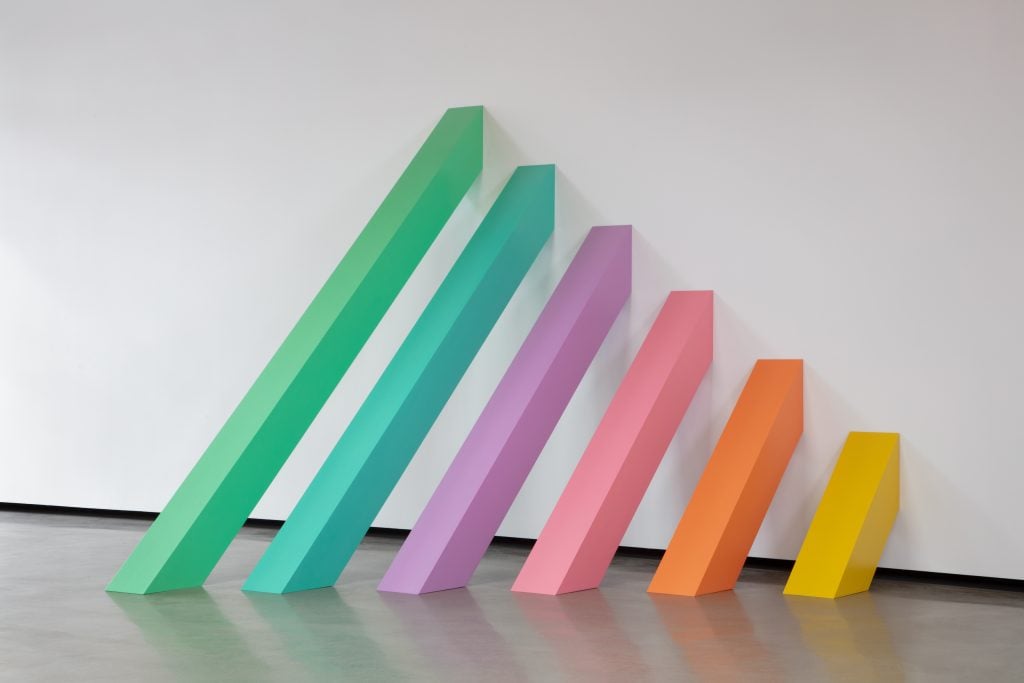
Judy Chicago, Rainbow Pickett (1965/2021). Courtesy of the artist, Jordan Schnitzer Family Foundation.
Wafting above “The City of Ladies” section are enormous brocade-lined tapestries embroidered with cursive queries like “Would God Be Female?” and “What if Women Ruled the World?” Text is a vital part of Chicago’s practice. When asked if she’s just as much of a writer as she is an artist she deflects. “Doesn’t Ed Ruscha have text?” she responded and impatiently dismissed this subject. Chicago originally produced these gilded banners for Dior’s summer 2020 haute couture show (the house’s creative director Maria Grazia Chiuri is also fond of sloganeering and explicit feminist messaging).
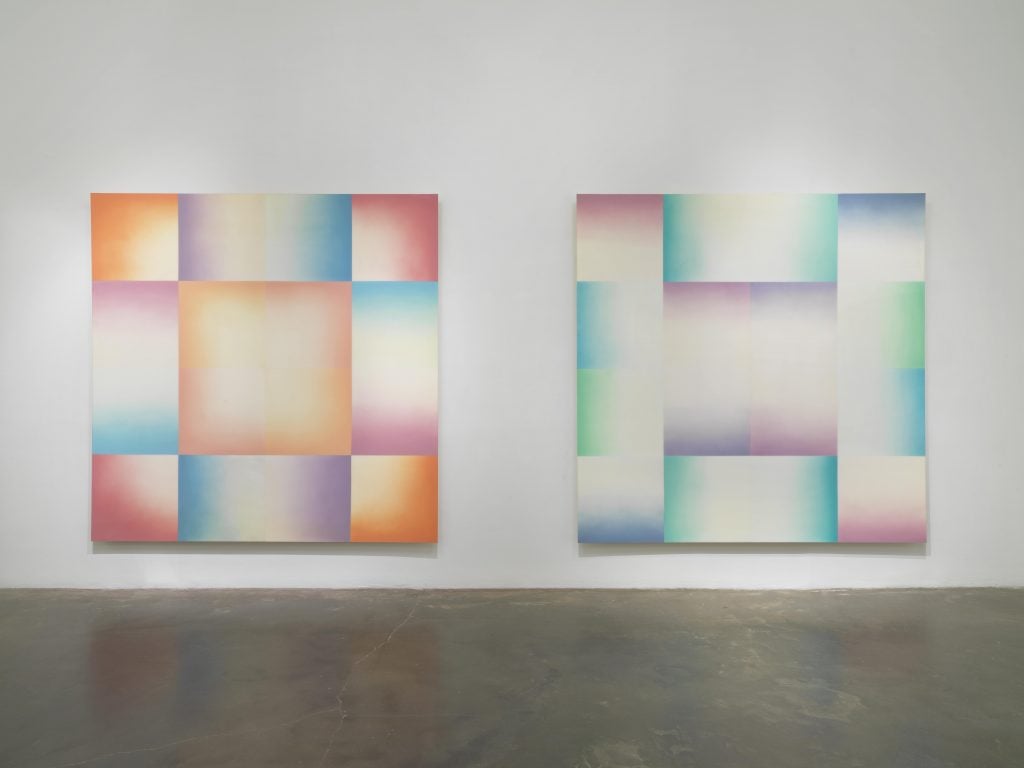
“Judy Chicago: Herstory,” 2023. Exhibition view: New Museum, New York. Courtesy New Museum. Photo: Dario Lasagni
The banners have since become an iconic component of Chicago’s body of work. “The project has developed a life of its own,” Chicago said, “It’s reached out across a number of countries with people all over wanting to have a chance to answer the questions that are posed on the banners, which I guess speaks a lot to the longing for change.”
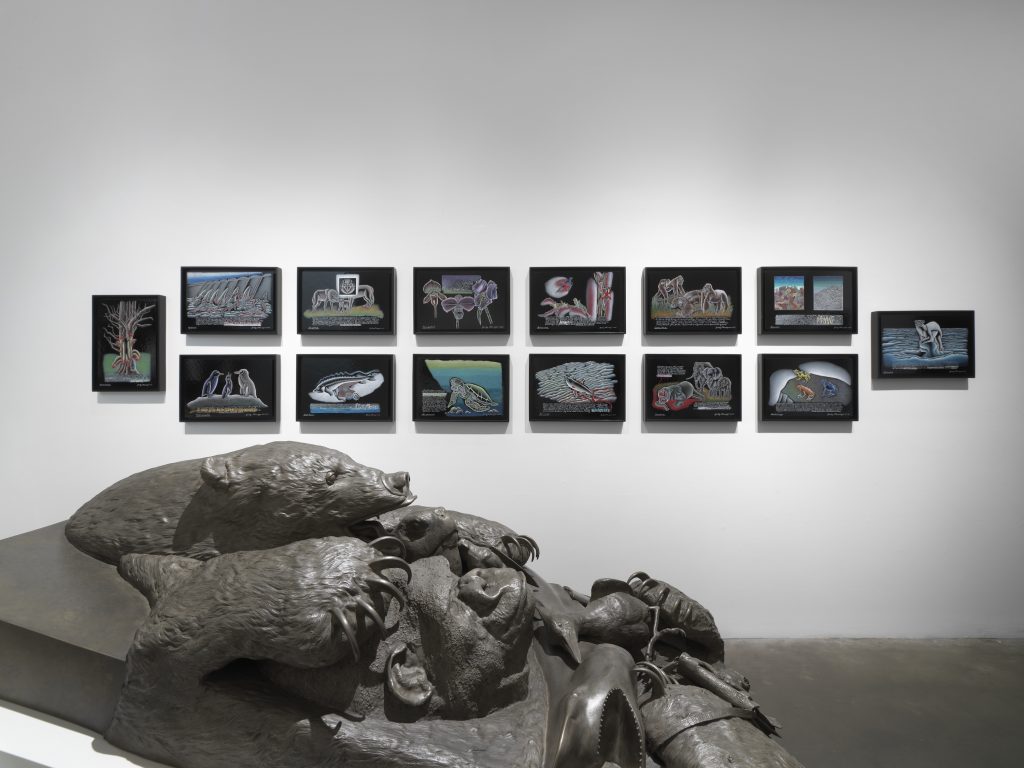
“Judy Chicago: Herstory,” 2023. Exhibition view: New Museum, New York. Courtesy New Museum. Photo: Dario Lasagni
The banners aren’t as well-known as her 1979 benchmark The Dinner Party, which is permanently displayed in its own gallery at the Brooklyn Museum (the New Museum has the drawings and studies for the plates on display, however, and they’re a revelation). Speaking of dinner parties, Dior hosted a post-preview 230-person celebratory meal down the street at the Bowery Hotel’s rooftop restaurant. After the first course, Chicago rose and delivered a moving speech.

Judy Chicago, Rainbow Shabbat (1992). Fabrication by Bob Gomez, glass painting by Dorothy Maddy. Courtesy of Jordan Schnitzer Family Foundation
“When I was a little girl, I was raised by a father at a time when fathers did not really participate in parenting,” she told the rapt audience. “My father taught me that I had an obligation to work for change, towards a better world, and to make a contribution. As anybody who’s followed my career knows, I’ve had a pretty rough struggle… I put my faith in art history. And, as it turns out, I might have been right. However, there is still a lot to do before there is real institutional change and the paradigm shift we need if we’re going to survive as a human race.”
